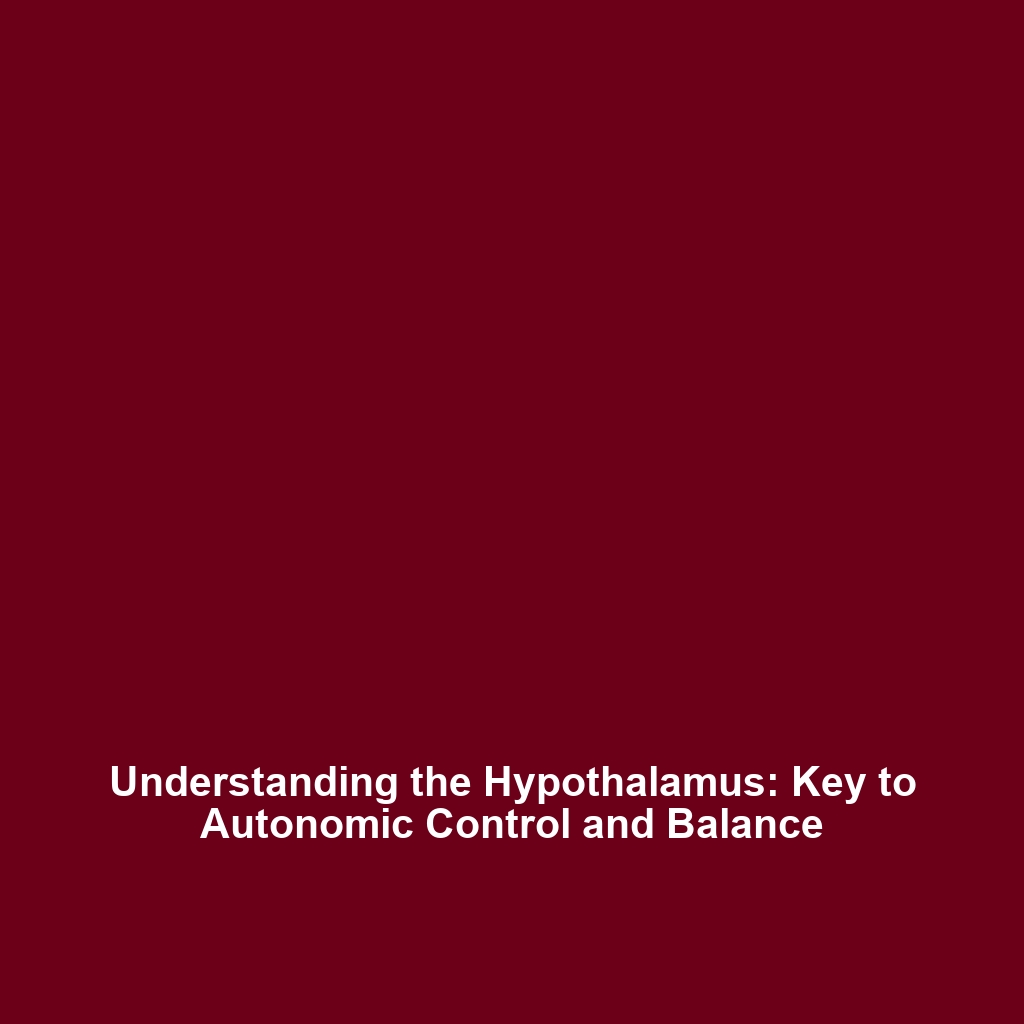The Hypothalamus: Controls Autonomic Functions and Regulates the Endocrine System
Introduction
The hypothalamus is a vital structure within the brain, playing a crucial role in regulating various autonomic functions, including hunger, thirst, and circadian rhythms. Additionally, it governs the endocrine system through its connections with the pituitary gland. Understanding the significance of the hypothalamus is essential for the broader study of biomechanics, as it influences physiological responses that are integral to movement, energy management, and overall bodily function. This article delves into the intricacies of the hypothalamus, revealing its impact on biomechanics.
Key Concepts
The Role of the Hypothalamus
The hypothalamus serves as a command center for autonomic functions, influencing:
- Hunger and Satiety: It helps regulate food intake and energy expenditure.
- Thirst Mechanisms: It monitors hydration levels and triggers thirst.
- Circadian Rhythms: It modulates sleep-wake cycles and other circadian rhythms.
These functions are vital for maintaining homeostasis in organisms, including the biomechanical aspects of movement and physical performance.
Interaction with the Endocrine System
Through its connection with the pituitary gland, the hypothalamus also regulates hormone release, affecting numerous physiological processes such as:
- Growth: Through growth hormone release.
- Metabolism: Through thyroid-stimulating hormone control.
- Stress Response: Through adrenocorticotropic hormone (ACTH) secretion.
The interplay between the hypothalamus and the endocrine system is paramount for understanding how biomechanics is influenced by hormonal changes during physical activity.
Applications and Real-World Uses
Understanding the hypothalamus has significant implications in various fields related to biomechanics, such as:
- Sports Science: Evaluating how hormonal fluctuations affect athlete performance.
- Nutrition: Developing dietary plans that consider hunger regulation and metabolic responses.
- Sleep Medicine: Addressing disorders linked to circadian rhythm disruptions.
These applications highlight how knowledge of the hypothalamus aids in optimizing human performance and health.
Current Challenges
Despite its critical role, studying the hypothalamus poses several challenges:
- Complexity of Interactions: The layered interactions between hormonal signals can be difficult to decode.
- Variability Among Individuals: Genetic and environmental factors can influence hypothalamic function.
- Limitations in Research Technologies: Current methodologies may not fully capture real-time changes in hypothalamic activity.
Addressing these challenges is essential for advancing our understanding of the hypothalamus within the biomechanics framework.
Future Research and Innovations
Innovative research is paving the way for a deeper understanding of the hypothalamus and its biomechanics implications. Future studies may focus on:
- Neuroimaging Techniques: Improving visualization of hypothalamic activity during physical tasks.
- Wearable Technology: Developing devices that monitor hormonal changes in real time during exercise.
- Gene Editing: Exploring the potential of CRISPR to investigate genetic factors influencing hypothalamic functions.
These innovations hold promise for enhancing our knowledge and applications of the hypothalamus in biomechanics.
Conclusion
In conclusion, the hypothalamus plays an indispensable role in controlling autonomic functions such as hunger, thirst, and circadian rhythms, alongside regulating the endocrine system via the pituitary gland. Its impact on biomechanics cannot be understated, as it connects physiological regulation to physical performance. To explore additional insights into the interconnectedness of bodily systems and biomechanics, check out our articles on hormonal regulation and energy management in sports.
